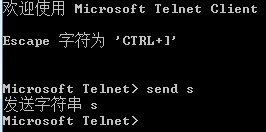Netty(1-1)Discard
一、DiscardServerHandler
import io.netty.buffer.ByteBuf; import io.netty.channel.ChannelHandlerContext; import io.netty.channel.ChannelInboundHandlerAdapter; public class DiscardServerHandler extends ChannelInboundHandlerAdapter {//(1) @Override public void channelRead(ChannelHandlerContext ctx, Object msg) throws Exception {//(2) ByteBuf in = (ByteBuf) msg; //discard the received data silently in.release();//(3) } @Override public void exceptionCaught(ChannelHandlerContext ctx, Throwable cause) throws Exception {//(4) cause.printStackTrace(); ctx.close(); } }
1、DiscardServerHandler extends ChannelInboundHandlerAdapter。ChannelInboundHandlerAdapter是ChannelInboundHandler的实现。ChannelInboundHandler提供了很多event handler的方法,需要你自行覆盖。但是,你不需要自己实现它,只需要extends ChannelInboundHandlerAdapter即可。
2、覆盖channelRead(),当收到消息时,该方法会被调用,来自客户端的任何数据都会被接收到。本例,接收的消息类型是ByteBuf。
3、为了实现DISCARD PROTOCOL,该handler必须忽略掉接收到的消息。ByteBuf是reference-counted对象,必须被销毁,通过写release()。但是,如果该ByteBuffer,需要传递给下一个handler处理时,则不要release()。调用release()的场景:
1)、谁是最后使用者,谁负责释放
2)、如果有异常了,即ByteBuf没有成功传递到下一个Handler,一定要自行释放。
通常channelRead()类似如下实现:
try { // Do something with msg } finally { ReferenceCountUtil.release(msg); }
4、exceptionCaught(),由于I/O异常或者处理events时异常会调用该方法。多数情况下,该方法内应该实现
1)、logged(记录错误日志)
2)、关闭掉相关的channel。
当然,你可以在关闭该connection前,返回response消息给客户端。
二、DiscardServer
import io.netty.bootstrap.ServerBootstrap; import io.netty.channel.ChannelFuture; import io.netty.channel.ChannelInitializer; import io.netty.channel.ChannelOption; import io.netty.channel.EventLoopGroup; import io.netty.channel.nio.NioEventLoopGroup; import io.netty.channel.socket.SocketChannel; import io.netty.channel.socket.nio.NioServerSocketChannel; import lombok.extern.slf4j.Slf4j; /** * Discards any incoming data */ @Slf4j public class DiscardServer { private int port; public DiscardServer(int port) { this.port = port; } public void run() throws InterruptedException { EventLoopGroup bossGroup = new NioEventLoopGroup();//(1) EventLoopGroup workerGroup = new NioEventLoopGroup(); try { ServerBootstrap b = new ServerBootstrap();//(2) b.group(bossGroup,workerGroup) .channel(NioServerSocketChannel.class)//(3) .childHandler(new ChannelInitializer<SocketChannel>() {//(4) @Override protected void initChannel(SocketChannel ch) throws Exception { ch.pipeline().addLast(new DiscardServerHandler()); } }) .option(ChannelOption.SO_BACKLOG, 128)//(5) .childOption(ChannelOption.SO_KEEPALIVE, true);//(6) //bind and start to accept incoming connections ChannelFuture f = b.bind(port).sync();//(7) log.info(DiscardServer.class.getName() + "started and listen on " + f.channel().localAddress()); //wait unit the server socket is closed. //本例中,不会关闭,但以下能优雅关闭server f.channel().closeFuture().sync();//(8) //log.info("===================已关闭"); } finally { workerGroup.shutdownGracefully();//(9) bossGroup.shutdownGracefully(); } } public static void main(String[] args) throws InterruptedException { int port = 8080; new DiscardServer(port).run(); } }
1、NioEventLoopGroup是多线程的event loop,用于处理I/O操作。netty提供了多种EventLoopGroup,如:OioEventLoopGroup。服务端,建议使用2个NioEventLoopGroup。第一个,常叫做“boss”,接收connection,其实就是Acceptor线程池,建议线程数设置为1。第二个,常叫做“worker”,真正负责I/O读写操作的线程池,将connection注册到 该worker上,用于后续的Channel绑定。
public NioEventLoopGroup() { this(0); } public NioEventLoopGroup(int nThreads) { this(nThreads, (Executor) null); }
2、ServerBootstrap是一个帮助类,对于Channel,直接写即可,如:.channel(NioServerSocketChannel.class)
3、使用NioServerSocketChannel接收connection
4、每来一个connection,则会创建一个Channel,并且该ChannelInitializer将会新增一个DiscardServerHandler实例到该Channel的ChannelPipeline。
5、socket自带参数,参考ChannelOption和ChannelConfig
6、option()用于NioServerSocketChannel接收connection。childOption()用于Channel
5、6参见https://www.jianshu.com/p/0bff7c020af2
7、以“异步方式”绑定server;sync()等待绑定的完成。
8、
1)关闭该Channel(断开connection) 并且,
2)获取该Channel的CloseFuture,通过阻塞当前线程直到完成。
9、关闭NioEventLoopGroup,并且释放掉所有资源
三、测试
使用telnet,
telnet localhost 8080

服务端没有任何动静,因为,没打印日志,且释放掉了。为了看得效果,修改DiscardServerHandler中的channelRead方法,如下:
@Override public void channelRead(ChannelHandlerContext ctx, Object msg) throws Exception { ByteBuf in = (ByteBuf) msg; try { while (in.isReadable()) {//(1) log.info("{}",(char)in.readByte()); System.out.flush(); } } finally { ReferenceCountUtil.release(msg);//(2) } }
然后,telnet
Microsoft Telnet> send s1
发送字符串 s1
Microsoft Telnet>
服务端收到:
11:32:52.533 [nioEventLoopGroup-3-1] s
11:32:52.535 [nioEventLoopGroup-3-1] 1
1、这个效率低下的while,可以替换成:
log.info(in.toString(io.netty.util.CharsetUtil.UTF_8));
telnet后,输出:11:36:04.363 [nioEventLoopGroup-3-1] s1
2、这里的release也可以使用in.release();
继续telnet测试,在windows下发送中文,服务器接收到的是乱码。但是在linux下执行:
[root@cent7-zuoys ~]# telnet 10.134.253.10 8080
Trying 10.134.253.10...
Connected to 10.134.253.10.
Escape character is '^]'.
遥远
服务器打印:11:46:56.333 [nioEventLoopGroup-3-3] 遥远
下一节,写netty client,代替telnet。



 浙公网安备 33010602011771号
浙公网安备 33010602011771号